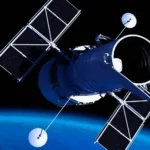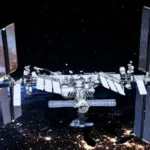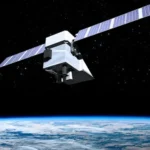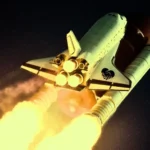Astronauts, those intrepid explorers of the cosmos, have captured our imaginations for generations. These fearless individuals venture beyond Earth’s boundaries to explore the vast expanse of space, conduct groundbreaking scientific research, and inspire humanity to reach for the stars. In this comprehensive exploration, we delve into the world of astronauts, uncovering their significance, training, missions, and their profound impact on our understanding of the universe and our place within it.
The Significance of Astronauts
Astronauts hold a unique and vital role in humanity’s exploration of space. They embody our innate curiosity, relentless drive to push boundaries, and quest to unravel the mysteries of the cosmos.
Pioneers of Space Exploration
Astronauts are pioneers who embark on missions pushing human achievement’s boundaries. They venture into the unknown, conducting experiments and making discoveries that advance our understanding of the universe. From Yuri Gagarin, the first human in space, to the astronauts of the Apollo program who walked on the Moon, these individuals have demonstrated humanity’s capacity for courage and exploration. They have expanded the horizons of human knowledge and paved the way for future generations of space explorers.
Symbols of International Collaboration
Astronauts serve as symbols of international collaboration in the pursuit of scientific knowledge. Space agencies worldwide work together on projects like the International Space Station (ISS), where astronauts from different countries live and work together in the ultimate example of peaceful cooperation. The ISS stands as a testament to the power of international collaboration, where astronauts from various nations work together to conduct experiments in microgravity, study Earth, and prepare for future deep-space missions.
Inspirational Figures
Astronauts inspire people of all ages to dream big and pursue careers in science, technology, engineering, and mathematics (STEM). Their achievements are beacons of hope, encouraging individuals to overcome challenges and aim for the seemingly impossible. Like Mae Jemison, the first African American woman in space, and Chris Hadfield, who charmed the world with his rendition of David Bowie’s “Space Oddity” from the ISS, have captivated our hearts and fueled our aspirations.
Training and Preparation
The journey to becoming an astronaut is rigorous and demanding. Astronaut candidates undergo extensive training to prepare them for space exploration’s physical and mental challenges.
Education and Qualifications
Astronaut candidates typically possess advanced engineering, medicine, or physical sciences degrees. They often have years of experience in their respective fields and excel in their chosen professions. NASA’s astronaut candidates, for example, often have backgrounds as pilots, engineers, scientists, or medical doctors. They bring their expertise to the space program, contributing to the success of missions.
Physical Fitness and Simulation
Astronauts must maintain excellent physical fitness to withstand the rigors of space travel. They undergo rigorous physical training, including cardiovascular conditioning, strength training, and endurance exercises. Simulation plays a crucial role in astronaut training. Simulators replicate the sensations and challenges of spaceflight, allowing us to practice critical tasks and emergency procedures. These simulations prepare astronauts for the unexpected challenges they may encounter in space.
Survival Training and Psychological Preparedness
Astronauts receive survival training to prepare for landing in remote or hostile environments upon returning to Earth. This training equips them with essential survival skills and ensures they can handle emergencies. Psychological preparedness is another critical aspect of astronaut training. Being isolated in the confines of a spacecraft for extended periods can be mentally taxing. It learns techniques to cope with isolation, stress, and communication challenges in space.
Missions and Scientific Research
Astronauts’ missions encompass various scientific research and exploration activities, each contributing to our understanding of space and the universe.
Spacewalks and Maintenance
Astronauts conduct spacewalks, or extravehicular activities (EVAs), to repair and maintain spacecraft and the ISS. These excursions involve working in the vacuum of space while tethered to the spacecraft. Spacewalks are crucial for ensuring the functionality and safety of spacecraft and space stations. They require careful planning and coordination to execute complex tasks.
Scientific Experiments
Astronauts perform scientific experiments in the unique environment of microgravity. The ISS laboratory conducts biology, physics, materials science, and Earth science experiments. These experiments provide insights into fundamental scientific questions and have practical applications on Earth, from medical research to developing advanced materials.
Lunar and Martian Exploration
Astronauts play a central role in future lunar and Martian exploration missions. NASA’s Artemis program aims to return astronauts to the Moon, paving the way for human missions to Mars. These missions will require astronauts to spend extended periods in deep space, conducting experiments, testing new technologies, and preparing for the challenges of interplanetary travel.
The Future of Astronauts
The future of astronauts holds the promise of further exploration, scientific discovery, and expanding human presence in space.
Moon to Mars and Beyond
Astronauts will continue to lead the way in exploring our solar system. Missions to the Moon and Mars will test the limits of human endurance and expand our understanding of the cosmos. The Artemis program, which aims to establish a sustainable presence on the Moon, represents the next step in human space exploration. It will live and work on the lunar surface, conducting experiments and preparing for the eventual journey to Mars.
Commercial Space Travel
The rise of commercial space travel opens up new opportunities for astronauts to venture beyond Earth’s orbit. Private companies like SpaceX and Blue Origin are developing spacecraft for tourism, research, and exploration. It may be on commercial missions to space hotels, lunar bases, or interplanetary voyages as the commercial space industry matures.
Conclusion
Astronauts are more than space travelers; they are pioneers, symbols of international cooperation, and sources of inspiration for future generations. Their significance extends beyond the confines of Earth, reaching into the cosmos and expanding our understanding of the universe.
As space exploration continues to evolve, astronauts will remain at the forefront of our quest to explore the final frontier, pushing the boundaries of human achievement and inspiring us all to reach for the stars. They are the torchbearers of humanity’s dreams, lighting the way to a future where the cosmos is within our grasp and the mysteries of the universe await our discovery.












